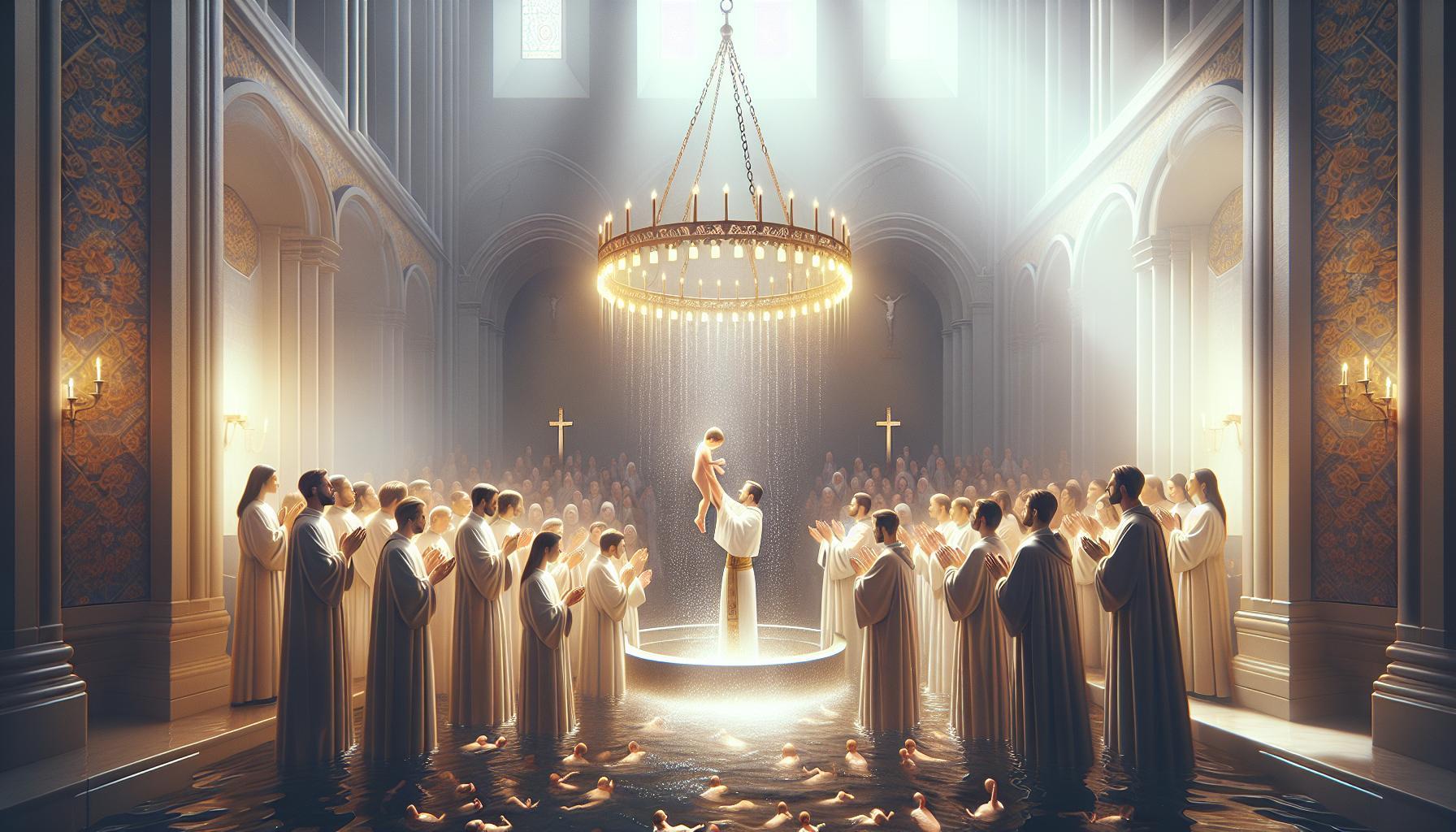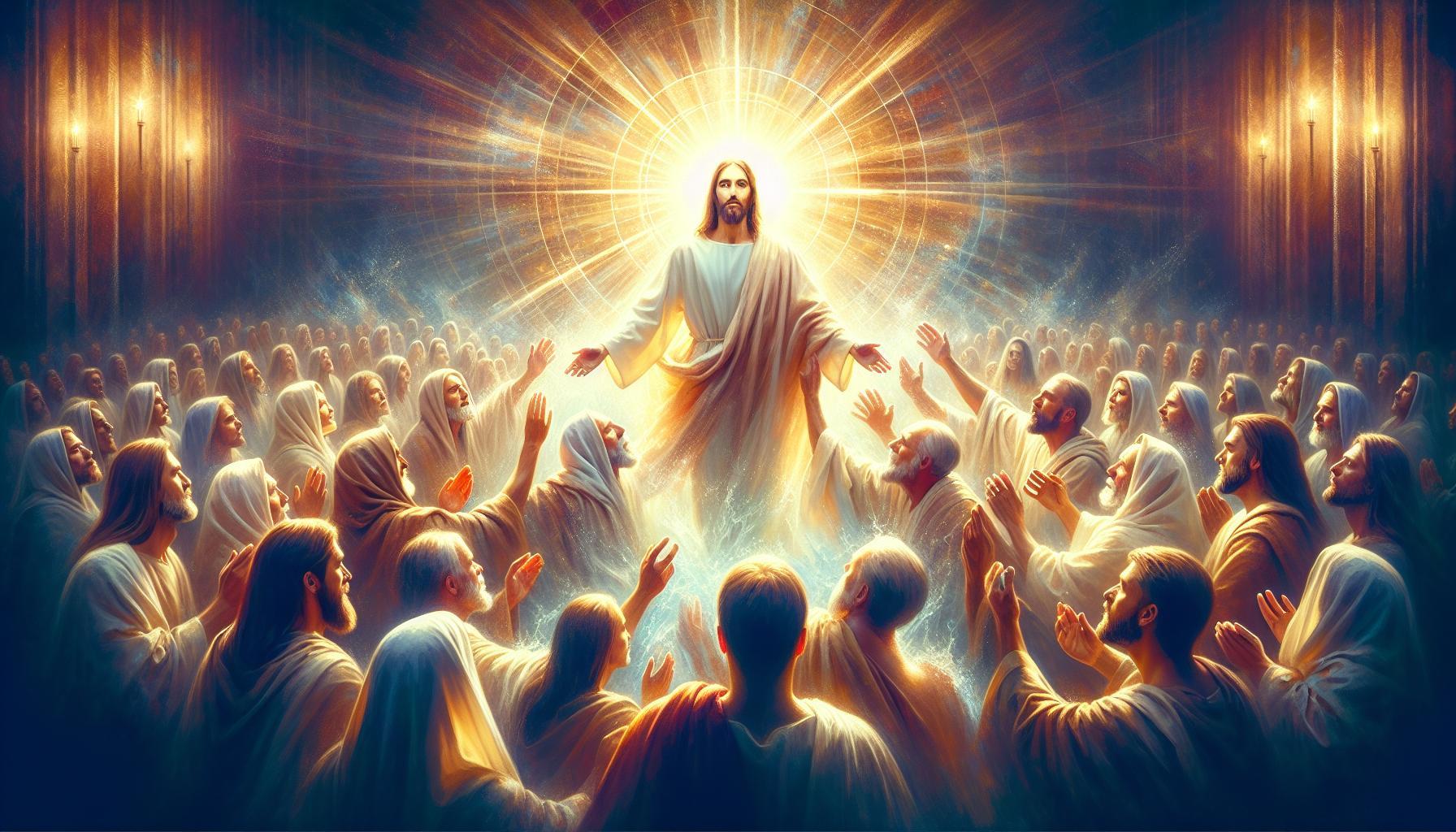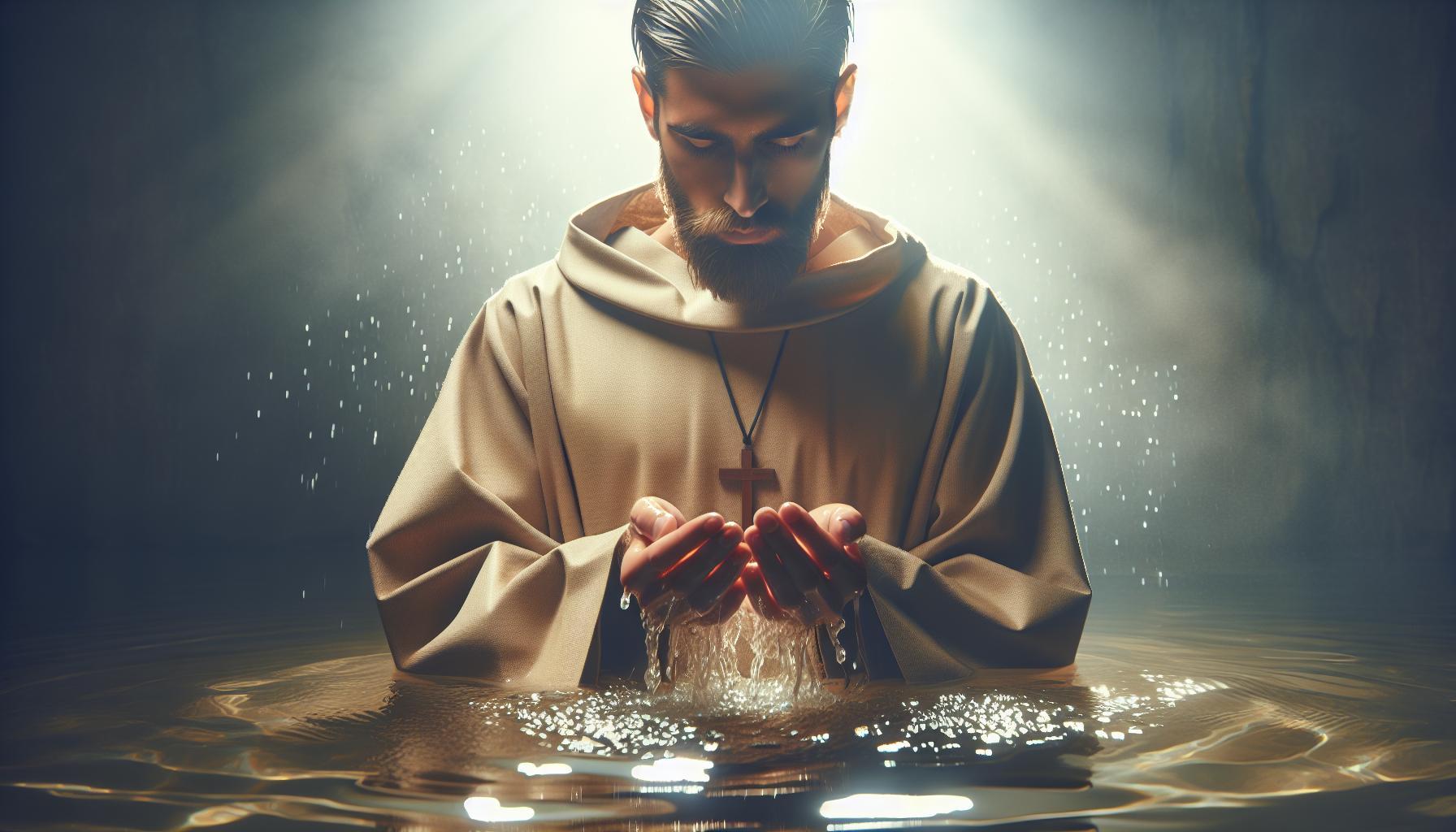Wondering what to expect during a Catholic baptism? Understanding the step-by-step process of this sacred ceremony is essential for families preparing for this important milestone. From the welcoming of the child to the necessary rituals, this guide will illuminate each moment of the baptism, ensuring a meaningful experience for all involved.
Understanding the Significance of Baptism in Catholic Faith
Understanding the role of baptism within the Catholic tradition is crucial for grasping the foundation of Catholic faith. This sacred rite signifies more than just a ceremonial cleansing; it embodies the initiation into a community of believers. Through baptism, individuals—often infants, but also adults—are welcomed into the Church, representing a transformative moment in their spiritual journey.
Theological Importance
Baptism, according to Catholic doctrine, is essential for salvation as it removes original sin, making the individual a member of the Church. It is seen as a sacrament that not only marks the beginning of a lifelong commitment to Christ but also symbolizes spiritual rebirth. The act encompasses several key theological themes:
- Initiation: Baptism initiates individuals into the Christian community, fostering a sense of belonging and collective faith.
- Grace: It is believed that the grace received through baptism equips individuals to lead a life aligned with the teachings of Jesus.
- Identity: The rite signifies the person’s new identity as a child of God, embodying their faith journey and commitment to a life of discipleship.
Community and Tradition
Participating in baptism also connects families and communities, reinforcing the shared values and beliefs that define Catholicism. During the ceremony, family, friends, and parish members come together, offering their prayers and support for the newly baptized. This collective celebration underscores the communal aspect of faith and the importance of nurturing one’s spiritual life within a larger framework.
It’s not just the acts performed during the baptism that hold meaning; the symbols and rituals encapsulated within the ceremony resonate deeply in the lives of the participants. The use of water, oil, and light reflects fundamental Christian beliefs and serves as a reminder of the multiple layers involved in the sacrament. For a more comprehensive overview, consider exploring “What Happens at a Catholic Baptism Step by Step? Complete Ceremony Guide,” which details the various elements present in baptism and their significance.
Through baptism, individuals and communities navigate a transformative journey anchored in faith, hope, and a shared commitment to Christ, making it one of the pivotal moments in the life of a Catholic believer.
Key Elements of the Catholic Baptism Ceremony

The Catholic baptism ceremony is rich in symbolism and significance, marking a profound spiritual journey into the Christian community. Understanding the key components of this sacred rite is essential for parents, godparents, and participants alike. Each element is thoughtfully designed to convey the central tenets of the faith and the transformative nature of baptism.
Essential Components of the Ceremony
During a Catholic baptism, several crucial elements come together to create a meaningful experience:
- Welcome and Introduction: The ceremony typically begins with a warm welcome from the priest or deacon, who sets the tone by explaining the importance of the sacrament. Families and guests are urged to participate actively in the rite.
- Sign of the Cross: The priest makes the Sign of the Cross on the forehead of the child. This action signifies belonging to Christ and serves as a reminder of their new identity within the faith.
- Scripture Readings: Selected scripture passages are read, reflecting the theme of baptism and the call to discipleship. These readings offer insights into God’s promises and the transformative power of faith.
- Renunciation of Sin and Profession of Faith: Parents and godparents publicly renounce sin on behalf of the child and profess their faith, showcasing their commitment to raising the child in the Christian tradition.
- Water Ritual: Perhaps the most significant part of the ceremony is the pouring or immersion of water. This symbolizes purification and rebirth, as the baptized individual is cleansed of original sin and welcomed into the Church.
- Anointing of the Oil: After the water ritual, the priest anoints the child with sacred oil, known as chrism, representing the gift of the Holy Spirit and marking the child as a member of Christ’s body.
- Lighting of the Baptismal Candle: A candle is lit from the paschal candle, symbolizing the light of Christ. It’s a powerful reminder for the family and godparents to guide the child in faith.
- Final Blessing: The ceremony concludes with prayers and blessings for the child and their family, ensuring the community supports them in their spiritual journey.
Significance of Each Element
Each step of the baptism ceremony carries profound meaning, reinforcing the faith’s teachings. For instance, the water not only cleanses but signifies a person’s rebirth in a spiritual sense. Additionally, the involvement of godparents represents a wider commitment; they pledge to guide the child in education about faith and morals.
Understanding these elements helps prepare families for what happens at a Catholic baptism step by step, fostering deeper appreciation and reflection on the sacrament’s significance. Planning for a baptism requires thoughtful consideration of each component, ensuring the day is both joyous and spiritually enriching for everyone involved.
Step-by-Step Guide to the Baptism Ritual

The Catholic baptism ritual is a profound and sacred ceremony that symbolizes the initiation into the Christian faith. Understanding the flow of the ceremony can greatly enhance the experience for both the participants and the attendees. Preparation is key, and knowing what to expect will help alleviate any anxiety related to the process. In this step-by-step exploration, we will delve into the essential components of a Catholic baptism, shedding light on each significant moment of this beautiful rite.
The Role of the Family and Godparents
Before the ceremony begins, it is crucial for families to choose suitable godparents—individuals who will guide the child in their spiritual journey. The godparents should be baptized themselves and of sufficient age, usually at least 16 years old. This selection process serves as a vital first step, reinforcing the communal aspect of faith within the Catholic Church.
Arrival and Initial Rites
As the congregation gathers, the service typically opens with a celebratory selection of hymns. The priest or deacon welcomes everyone and explains the significance of baptism. The ceremony often starts outside the church in a welcoming gesture, as the priest or deacon begins with an invocation. Following this, he will question the parents and godparents about their intentions regarding the child’s upbringing in the faith. It’s a beautiful moment reflecting the commitment to raise the child within the Church’s teachings.
The Baptismal Ceremony
The central part of the baptism involves several essential actions:
- Blessing of the Water: The priest blesses the baptismal water, signifying its role in the sacrament as a source of grace.
- Baptismal Promises: The parents and godparents renounce sin and profess their faith, which is followed by the actual baptism of the child. Water is poured over the head three times in the name of the Father, Son, and Holy Spirit, marking the child’s spiritual rebirth.
- Anointing with Oil: After the baptism, the priest anoints the child with chrism oil, symbolizing strength and the Holy Spirit’s presence.
Ceremonial Gifts and Community Welcome
Once baptized, the child receives a white garment, representing purity, and a baptismal candle lit from the Paschal candle, illustrating the light of Christ being shared. The ceremony concludes with the congregation welcoming the newly baptized into the Christian community, reinforcing the importance of community support in spiritual growth.
| Step | Description |
|---|---|
| Initial Preparation | Choose godparents and prepare spiritually. |
| Welcoming | Hymns and introduction by the priest/deacon. |
| Blessing of Water | Holy water is blessed, signifying purity. |
| Baptism | Water is poured in the name of the Trinity. |
| Anointing | Priest anoints with chrism oil. |
| Community Welcome | Confirmation of a new member of the Church. |
By understanding these steps, families can approach the baptismal ceremony with confidence and reverence, celebrating the momentous occasion as a foundational event in their child’s spiritual journey. This comprehensive guide illustrates the richness of the ritual, ensuring all participants appreciate its significance as outlined in participating in a Catholic baptism.
The Role of Godparents and Their Importance

The selection of godparents holds significant weight in the baptism ceremony, especially in a Catholic context. These individuals are not only entrusted with the spiritual upbringing of the child but also play a pivotal role in the larger faith community. Understanding the importance and responsibilities of godparents enriches the experience of baptism, making it a transformative moment for families and their loved ones.
The Spiritual Guardians
In Catholicism, godparents serve as spiritual mentors and role models for the baptized child. They are expected to guide the child’s faith journey, providing support and encouragement as they navigate their relationship with God. Choosing the right godparents involves considering individuals who exemplify strong Christian values and can inspire the child spiritually.
- Support in Faith: Godparents should be practicing Catholics who can actively participate in the child’s spiritual development.
- Role Models: They should embody the teachings of Christianity, demonstrating a lifestyle that reflects their faith.
- Commitment: Godparents must be willing to invest time and love into the child’s life, being present during important milestones and spiritual events.
The Community Connection
Beyond their spiritual responsibilities, godparents also represent a bond between families and the wider Catholic community. Their presence during the baptism signifies an invitation for the extended family and friends to support the child’s religious growth. This communal aspect is vital, as it fosters a sense of belonging and accountability within the faith.
| Role of Godparents | Importance |
|---|---|
| Spiritual Support | Guiding the child in faith and values |
| Emotional Support | Providing love and encouragement throughout life |
| Accountability | Helping the parents in raising the child with Catholic morals |
| Community Representation | Fostering connections within the faith community |
The ritual of baptism is not merely a symbolic act; it signifies the beginning of a lifelong spiritual journey. Godparents play a crucial role in this journey, embodying the support, guidance, and love essential for nurturing the child’s relationship with God. By understanding these dynamics, families can make informed decisions about who to choose as godparents, ensuring that this sacred responsibility is fulfilled.
Preparing for Your Child’s Baptism: Tips and Insights

Preparing for your child’s baptism is an exciting journey filled with joy, anticipation, and perhaps a touch of nervous energy. This sacred ceremony marks a significant milestone not only in your child’s life but also within your family and the church community. Understanding the steps involved, as outlined in the comprehensive guide on what happens at a Catholic baptism step by step, can help streamline your preparations and make the day unforgettable.
When planning for the baptism, consider the following essential elements to ensure a smooth and memorable experience:
Choosing Godparents
Selecting godparents is a crucial step in the process. These individuals play an important role in your child’s spiritual upbringing, and enhancing the significance of this choice can greatly impact your child’s faith journey.
- Criteria for Godparents: Look for individuals who are active in their faith, understand the responsibilities involved, and are committed to supporting your child’s spiritual growth.
- Discuss Expectations: Have an open conversation with your chosen godparents about their role, ensuring they are prepared to take on this meaningful commitment.
Preparation Meetings
Many parishes require parents to attend preparation meetings or classes prior to the baptism. These sessions offer insights into the significance of the sacrament, along with practical details about the ceremony itself.
- Inquire Early: Reach out to your parish office to schedule these meetings well in advance to avoid last-minute stress.
- Ask Questions: Don’t hesitate to voice any concerns or inquire about specific elements covered in the complete ceremony guide.
Baptismal Attire
Traditionally, infants wear a white garment for their baptism, symbolizing purity and new life. Choosing the right outfit, whether it be a gown, suit, or something in between, adds a personal touch to the ceremony.
| Outfit Type | Considerations |
|---|---|
| Gown | Look for breathable fabrics; consider the length based on the season. |
| Suit | Make sure it is comfortable and easy to put on and take off. |
| Accessories | Think about shoes, hats, or blankets to enhance the overall look. |
By taking these steps, you can ensure that you are well-prepared for one of life’s most significant ceremonies. As you delve into the details of what happens at a Catholic baptism step by step, remember that your faith, love, and intention are at the heart of the event, creating cherished memories for your family and your child’s spiritual journey.
What to Expect During a Catholic Baptism Service
Participating in a Catholic baptism service is a profound experience that marks an important milestone in the lives of both the individual being baptized and their family. The ceremony is rich in symbolism and tradition, serving as a welcoming into the Christian community. Understanding what to expect can alleviate any uncertainty and allow families to fully engage in this sacred rite.
The ceremony typically begins with the gathering of families and friends in the church, highlighting the communal aspect of baptism. As the service commences, the priest will lead the congregation in prayer, setting a reflective tone. One of the first key moments is the Invitation to Baptism, during which the priest asks the parents and godparents about their intentions—affirming their commitment to raise the child in the faith. This is a vital part of the ceremony, emphasizing the responsibilities that come with this sacrament.
Rituals and Significances
During the baptism, several significant rituals take place:
- Sign of the Cross: The priest makes the sign of the cross on the forehead of the child, symbolizing Christ’s protection.
- Litany of Saints: The congregation may call upon saints to intercede on behalf of the baptized, highlighting the belief in a community of faith that extends beyond this life.
- Blessing of Water: The water used for baptism is blessed, signifying its role as a purifying agent and a means of grace.
- Actual Baptism: The priest pours water over the head of the catechumen three times, invoking the Holy Trinity: “I baptize you in the name of the Father, and of the Son, and of the Holy Spirit.” This act is pivotal, marking the individual’s rebirth as a member of the Church.
Each aspect of the service fosters a deep spiritual connection, reinforcing the significance of baptism as not only a personal commitment but also a collective celebration of faith.
Post-Baptismal Blessings and Celebrations
Following the baptism, there are additional rituals that underscore the importance of the event. The priest may anoint the newly baptized with chrism, symbolizing the gift of the Holy Spirit. He will also present the child with a candle lit from the Paschal candle, representing the light of Christ entering the child’s life. Parents and godparents are often called upon to guide the child in their spiritual life, further emphasizing the communal nature of the sacrament.
In conclusion, a Catholic baptism is not merely a ceremonial act but a significant initiation into the faith. By understanding the structure and meaning behind each step, families can better appreciate this momentous occasion. This knowledge ensures that they engage meaningfully with the baptism experience, celebrating not just the individual but the broader community of believers.
The Spiritual Meaning Behind the Symbols Used in Baptism
Baptism is rich in symbolism, each element serving to convey deeper spiritual truths that resonate throughout the Catholic faith. As part of the ceremony, various symbols represent essential aspects of life, faith, and the transformative power of God. Understanding the significance of these symbols is crucial for anyone seeking to grasp what happens at a Catholic baptism step by step.
Water
One of the most significant symbols in baptism is water, representing both cleansing and rebirth. In the act of baptism, water symbolizes the washing away of original sin and the beginning of a new life in Christ. This notion of water as a purifying agent is deeply rooted in scripture, echoing the flood that cleansed the world in Noah’s time and the parting of the Red Sea that led the Israelites to freedom. It signifies entering a covenant with God and being reborn as a member of the Church.
White Garment
Another important symbol is the white garment, which signifies purity, innocence, and new beginnings. When the baptized person is clothed in white, it symbolizes the shedding of sin and the embracing of a new life following Christ’s example. In the context of “What Happens at a Catholic Baptism Step by Step? Complete Ceremony Guide,” this garment not only reflects the individual’s new spiritual identity but also serves as a reminder to live a life that exemplifies the virtues of faith and goodness.
Cross
The cross is also an integral symbol during the baptism ceremony, representing both the suffering of Christ and the victory over sin and death. The addition of the cross during the rite reminds the congregation and the baptized alike that to follow Christ involves a commitment to bear one’s own crosses in life. It prompts reflection on the sacrifice made by Jesus and encourages the baptized to grow in faith and resilience.
Candle
Finally, the baptismal candle signifies the light of Christ. During the ceremony, the newly baptized is often given a lit candle, representing the light of faith that illuminates their path. It reinforces the call to share that light with others, symbolizing the responsibility to live as a beacon of hope and guidance within the community. This element encapsulates the essence of what it means to be a part of the Church – to be both nourished by its light and to reflect it in everyday life.
By exploring these symbols—water, the white garment, the cross, and the candle—individuals can gain a deeper appreciation for the profound meaning behind each step of the baptismal ceremony. These elements are not merely rituals; they encompass a transformative journey that aligns with the broader narrative of faith in the Catholic Church.
Common Questions and Misconceptions About Catholic Baptism
Many people have questions or misconceptions about the significance and process of Catholic Baptism, especially since it is a profound step in joining the Catholic Church. Understanding what truly happens during this sacred ceremony can tremendously enhance its meaning for both parents and godparents. Below, we address some common queries that often arise.
Who Can Be Baptized?
A common misconception is that only infants can be baptized in the Catholic Church. In reality, individuals of any age may receive baptism, provided that they have not been baptized previously. Infants are often baptized to initiate them into the faith early in life, but adults can also seek baptism through the Rite of Christian Initiation of Adults (RCIA). This rite not only welcomes those new to Catholicism but also provides them with essential education about the faith before receiving the sacrament.
Can Someone Be Baptized More Than Once?
Many wonder if they can be baptized again, especially if they feel disconnected from the Church or their faith. According to Catholic doctrine, baptism is a sacrament meant to be received only once; it marks a permanent spiritual identity. The belief is that, regardless of future lapses in faith, the baptismal grace remains. Therefore, even if one has wandered or felt lost, the Catholic Church recognizes their original baptism as still valid.
What If My Child Is Baptized in Another Christian Denomination?
It’s a common concern for parents whose child is baptized in a different Christian tradition. The Catholic Church acknowledges valid baptisms performed with the proper form and intention, even if conducted in another denomination. This means if the baptism was done using water and the Trinitarian formula (“In the name of the Father, and of the Son, and of the Holy Spirit”), it is accepted as valid. However, for a child of parents who wish to raise them in the Catholic faith, a celebration of confirmation or a ceremony of inclusion may follow later.
Do Baptisms Require Uncomplicated Procedures?
While some may think that a baptism is a simple task involving just water and words, various components come into play. For instance, there is typically a preparation session for parents and godparents before the ceremony, covering spiritual significance and the commitments involved. Church expectations also require godparents to be confirmed Catholics in good standing, emphasizing that the role requires both a spiritual and practical commitment to the child’s faith journey.
For those seeking a deeper understanding of what happens at a Catholic baptism step by step, it’s essential to approach it with both heart and mind. Discussions with clergy, participation in preparatory classes, and engaging with the community can create a fulfilling baptism experience that embodies the rich traditions of the Catholic faith.
Frequently Asked Questions
What Happens at a Catholic Baptism Step by Step?
Baptism in the Catholic Church involves several significant steps: the welcoming of the child, the signing of the cross, the Proclamation of Faith, and finally, the pouring of water. Each element serves to signify the child’s entry into the Church and the cleansing of sin.
A baptism typically begins with the priest welcoming the family and gathering the community. The priest then leads the assembly in a proclamation of faith, followed by the anointing with sacred oil. The immersion or pouring of water symbolizes purification and new life, marking the child’s journey in faith.
Why Does Baptism Matter in the Catholic Tradition?
Baptism is central to the Catholic faith as it serves as the gateway to the sacraments and the beginning of a person’s spiritual journey. It signifies not only being cleansed from original sin but also being incorporated into the Church community.
Through baptism, individuals receive the Holy Spirit, enabling them to live a Christian life. This sacrament is seen as essential for salvation according to Catholic doctrine, emphasizing the importance of being baptized to fully embrace the teachings of Jesus and the Church.
Can I Choose Godparents for My Child’s Baptism?
Yes, you can choose godparents for your child’s baptism. The Catholic Church requires that godparents be faithful Catholics who can guide the child in their spiritual journey, supporting them in their faith development.
Ideally, a godparent should be at least 16 years old and have received the sacraments of initiation. It’s also common to choose two godparents—one male and one female. Their role throughout the child’s life is to encourage a spiritual upbringing and act as a model of faith.
How Long Does a Catholic Baptism Ceremony Typically Last?
The duration of a Catholic baptism ceremony typically lasts about 30 minutes. This allows time for prayers, readings, the baptism itself, and any additional rituals, such as the lighting of a baptismal candle and anointing.
Each parish may vary slightly in the length and format of the ceremony, but the essential elements remain consistent. Attending the rehearsal prior to the ceremony can help families better understand the timeline and flow of the events.
What Should We Bring to Our Child’s Baptism?
For your child’s baptism, it’s customary to bring specially chosen items such as a white garment symbolizing purity, a baptismal candle, and a small towel. These elements play significant roles in the ceremony and reflect the child’s new life in faith.
The white garment represents the child’s new status as a member of Christ’s body, while the baptismal candle symbolizes the light of Christ. You should also consider bringing a small gift for the priest and possibly a guest book for attendees to sign as a memento of the day.
What Happens if I Miss My Child’s Baptism?
If you miss your child’s baptism, it’s essential to contact your parish to discuss rescheduling. Delaying baptism is not uncommon, and many parishes are accommodating in arranging a new date for you.
Baptism can usually be performed at a later date, and it’s important to remember that the Church encourages baptism as soon as possible after birth. The Church seeks to support families in this meaningful spiritual milestone.
Is It Necessary to Attend Baptism Classes?
Yes, attending baptism classes is often required for parents and godparents. These classes help prepare families for the responsibilities that come with baptism and deepen their understanding of the sacrament’s significance.
Many parishes offer informative sessions that cover the rituals involved, as well as the theological implications of baptism. Engaging in these classes can enhance the overall experience and helps families feel more connected to the Church community.
Key Takeaways
As we’ve journeyed through the steps of a Catholic baptism, we’ve explored the profound significance of each element, from the welcoming embrace of the community to the sacred acts of water and anointing. This rite of passage is not merely a ritual; it is a transformative moment that initiates individuals into the life of faith, enveloped by the love of God and the support of the Church.
Whether you are preparing for your own child’s baptism, participating as a godparent, or simply seeking to deepen your understanding, we hope this guide has illuminated the intricate beauty of this sacrament. Each step invites reflection, fostering a connection to tradition that transcends individual denominations.
We encourage you to dive deeper into the meaning behind the symbols and practices observed in this ceremony. Explore the role of community in baptism or consider how these sacred traditions might resonate in your life or ministry. Engage with your parish community or reach out to clergy for personal insights that enhance your experience.
Thank you for joining us on this informative pilgrimage through the rite of baptism. May your exploration continue to enrich your spiritual journey, opening doors to new perspectives and deeper connections within the fabric of faith.





